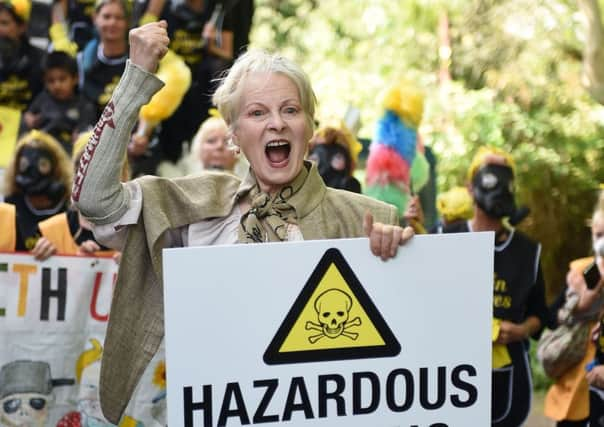200ft surge in sea level if we keep burning fossil fuels


The study shows that Antarctica’s long-term contribution to sea-level rise could probably be restricted to a few metres, which could still be manageable, if global warming did not exceed 2C.
But crossing that threshold would in the long run destabilise both West and East Antarctica - causing 50-60 metre sea-level rises that would reshape coastal regions for thousands of years to come, warns the study.
Advertisement
Hide AdAdvertisement
Hide AdThe study’s lead author Dr Ricarda Winkelmann, of the Potsdam Institute for Climate Impact Research, said: “If we were to burn all fossil-fuel resources, this would eliminate the Antarctic ice sheet and cause long-term sea-level rise unprecedented in human history.
“This would not happen overnight, but the mind-boggling point is that our actions today are changing the face of planet Earth as we know it, and will continue to do so for tens of thousands of years to come.
“If we want to avoid Antarctica becoming ice-free, we need to keep coal, gas and oil in the ground.”
Co-author Professor Anders Levermann said: “By using more and more fossil energy, we increase the risk of triggering changes that we may not be able to stop or reverse in the future.
“The West Antarctic ice sheet may already have tipped into a state of unstoppable ice loss, whether as a result of human activity or not. But if we want to pass on cities like Tokyo, Hong Kong, Shanghai, Calcutta, Hamburg or New York as our future heritage, we need to avoid a tipping in East Antarctica.”
Co-author Professor Ken Caldeira, of the Carnegie Institution for Science, said: “The idea was to compute what we have already started by emitting greenhouse-gas emissions and to analyse where that will take us.”
Burning all available fossil- fuel resources would result in carbon emissions of 10,000 billion tons. Assuming a pulse of carbon release, the scientists’ simulations show Antarctica would lose ice over at least the next 10,000 years, in response, with an average contribution to sea-level rise of up to three metres per century during the first millennium.
Consistent with recent observations and simulations, the scientists also found that even if global warming would be limited to two degrees, this already raises the risk of destabilising the West Antarctic ice sheet.
Advertisement
Hide AdAdvertisement
Hide AdProfessor Caldeira said: “And the risk increases with every additional tenth of a degree of warming, with unabated carbon emissions threatening the Antarctic Ice Sheet in its entirety.” The simulations take into account the impact of atmospheric and ocean warming on the Antarctic ice as well as feedback mechanisms that might speed up melting processes.
They also consider phenomena such as enhanced snowfall due to global warming that might offset some of the ice loss.
Dr Winkelmann said: “It is much easier to predict that an ice cube in a warming room is going to melt eventually than it is to say precisely how quickly it will vanish.”
Currently, Antarctica contributes less than 10 per cent to global sea-level rise, making it a minor factor compared to the thermal expansion of the warming oceans and the influx from melting mountain glaciers.